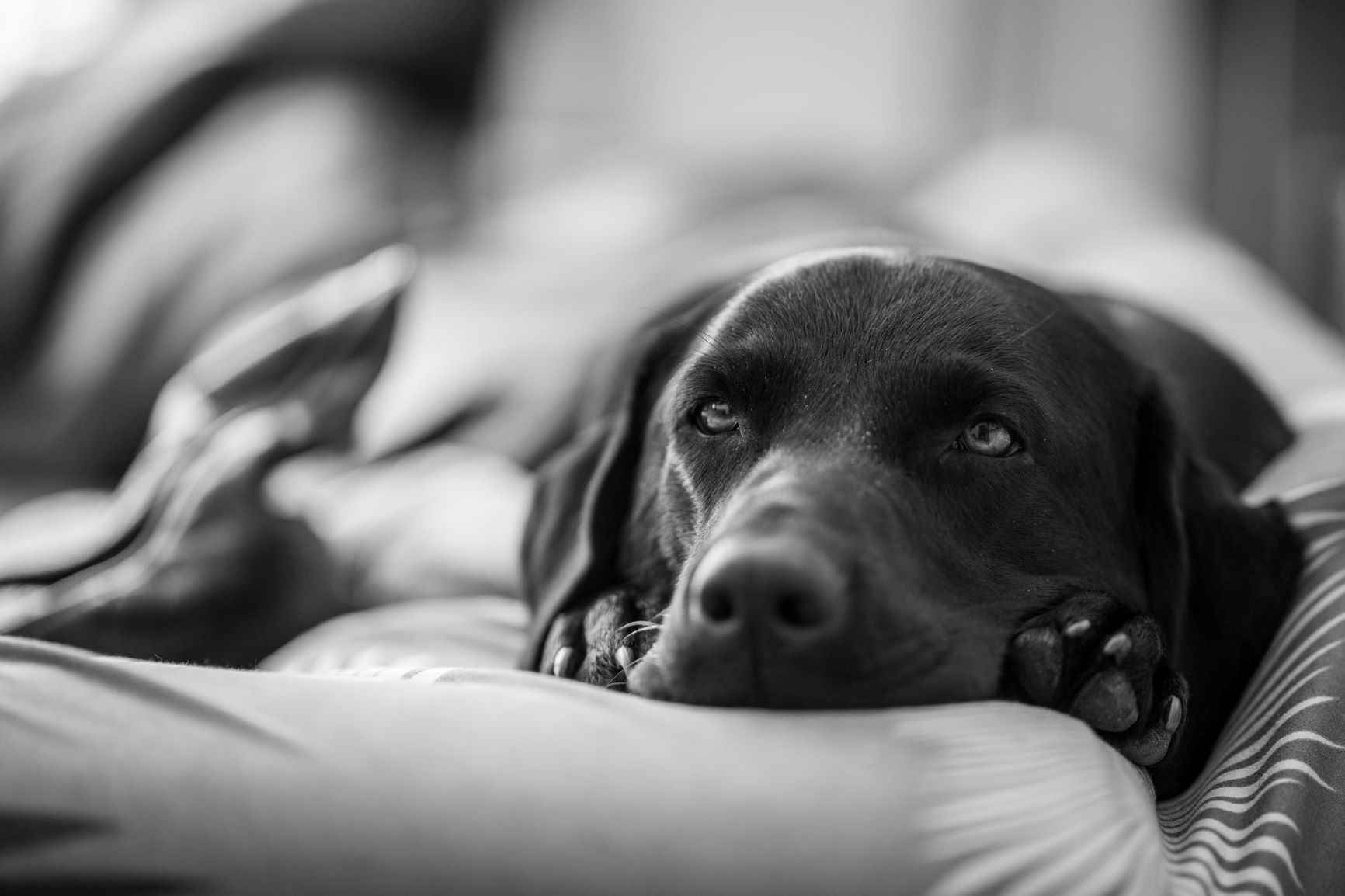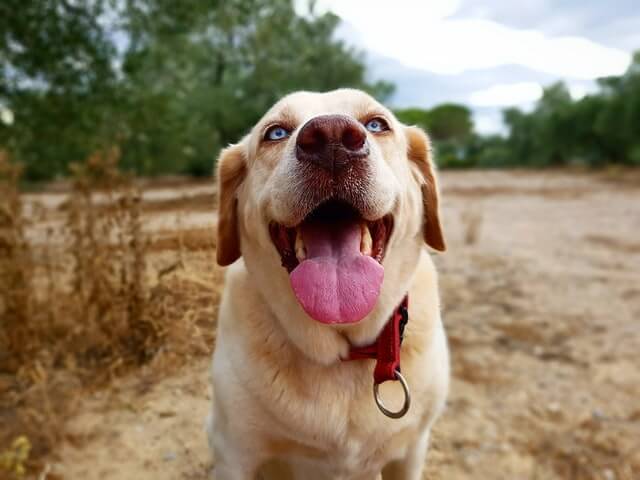Though Labrador Retrievers are large breed dogs with high activity demands, you may find yourself in the position of having one while not having as large a living space as you’d like.
Can you really survive with a big dog like a Labrador Retriever in an apartment, condo, or small living space?
Yes, you can! Exercise needs, noise issues, and expenses can be more complex, but creating a routine, finding good indoor and outdoor space, and mental stimulation are strategies that help make it work.
We’ve done it, and we’re going to show you how.
(This article may contain affiliate links. As an Amazon Associate I earn from qualifying purchases. Learn more)
We’ve relocated across the United States numerous times, and have lived in small spaces, including apartments and townhomes with multiple Labrador Retrievers.
We’ve logged thousands of miles relocating across the country with large, excited, impatient Labrador Retrievers.
We’ve even lived for months at a time in hotels with multiple Labradors, so we’re here to tell you from real experience, you’re going to make it through it.
How are you going to live in an apartment with a Labrador without going crazy?
Since we’ve been there, we’re going to show you some strategies to save your sanity, help your dog be happier, and make the combination of Labradors and apartment living work for you for as long as you need it to.
It won’t be easy, but it will be manageable. And we’re going to give you the guidance you need to handle it in the best way possible.
Labradors and Apartment Living – How to Make It Work
Lifestyle Demands of a Labrador Retriever
Since Labradors Retrievers are large breed dogs, on average weighing about 55-80 lbs when fully grown, they take up more physical space and require more room to get out their energy.
Size can vary depending on the characteristics of your particular dog and what traits were bred for. We’ve had Labradors weighing much more than this range too.
Labs are high-energy, active, and very playful dogs. They are generally a breed of dog that does well with a large yard or room to run, as they have been bred for water and land retrieval.
That’s not to say that you can only have one when you have a large space for them to run, but that it will definitely make your life a bit easier having this.
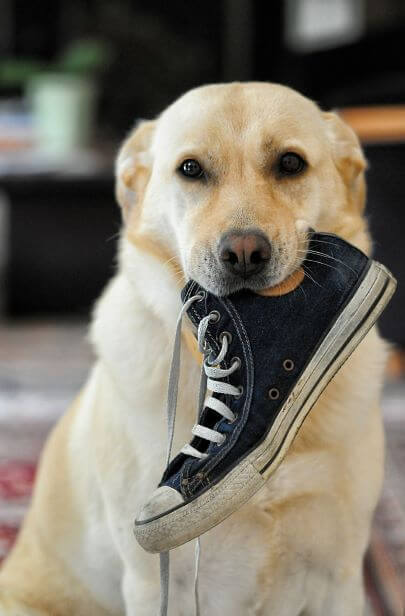
Labs are also very intelligent dogs and can find themselves looking for ways to get into trouble when they don’t get enough mental or physical stimulation. They are much easier to manage in a home of any size when they’ve been given a lot of exercise.
We’ve found that boredom and lack of exercise tend to cause unwanted behavior in Labs, such as chewing items in your home or other destructive behavior.
If you’re living in an apartment, condo, or townhome with a dog the size of a Labrador Retriever, there are some challenges you’ll have that come with having a smaller space. But there are steps you can take to deal with them.
Let’s take a look at the potential challenges of Labradors and apartment living, and also at what strategies you can use right away to help solve some of those problems.
Challenges of Apartment & Townhome Living with Labs
Exercise Is More Difficult Due to No Yard or Outdoor Space
By far the biggest issue when having a Labrador in an apartment or smaller living space, such as a condo or townhome, is the likelihood that you won’t have a yard.
Or if you have a yard, it might be an extremely small one, possibly not fenced, and one not likely to meet the exercise or activity demands needed by an active breed like Labrador Retrievers.
It might make training more difficult in that you won’t also have a confined space with fewer distractions to work on techniques with your dog.
The lack of a yard to play fetch, run, and tire out your dog will most likely be your biggest frustration, and we hear you on that. No doubt, it is really, really hard.
We’re going to go over some steps you can take to resolve this in the next section in just a moment.
Noise From Neighbors Causing Dogs to React
Another issue with having Labrador Retrievers in apartments is that you might have more surrounding noise from your neighbors that might cause a reaction from your dog.
You might have neighbor’s dogs barking, howling, whining, or making other sounds that then cause your dog to react.
Also, because you don’t have as much distance between you and your neighbors in apartments, and because you might have more neighbors in close proximity, your dogs may be bothered more by people’s noises.
More and closer neighbors mean things like more cars, parties, fireworks, cats, loud music, food smells, etc… things that, depending on your dog’s personality, could cause a reaction.
Your Property Search Could Be More Difficult
The initial search for an apartment, condo, or townhome to accommodate your large breed Labrador Retriever can also pose a challenge.
Depending on where you live, you might have a much harder time trying to find an apartment that will allow you to have your dog, especially a rental, and especially with a large breed dog.
Many times properties (especially rentals) will allow pets but cap the weight limit at around 30 lbs or so.
Labs, beyond the first few months of puppyhood, will exceed these weight limits quickly.
If you’re buying, instead of renting, you might have a homeowner’s association with rules dictating how many dogs you can have (and what breeds are allowed).
While Labs usually aren’t on the list of prohibited breeds, we’ve owned in communities where you were limited to only one dog, which would be a problem for your search if you already have multiple Labradors.
Additional Costs in Renting/Buying Due to Dogs
You might also face additional costs for having a Labrador in an apartment.
You might be required to pay increased security deposits or fees to have your Labrador in an apartment, condo, or townhome.
If you’re buying, you might have higher homeowner’s insurance, if your dog is in closer proximity to more residences and more likely to pose a risk to someone else.
Noise From Your Dogs Causing Neighbor Issues
Another issue of Labs in apartments is that your dog might cause issues for your neighbors due to the lack of space you have for your dog to run and get energy out.
Noises such as dog paws running up and down your stairs, your dog barking, playing in your apartment, or dog feet running across the floor can bother your neighbors as much as their noises might be bothering you.
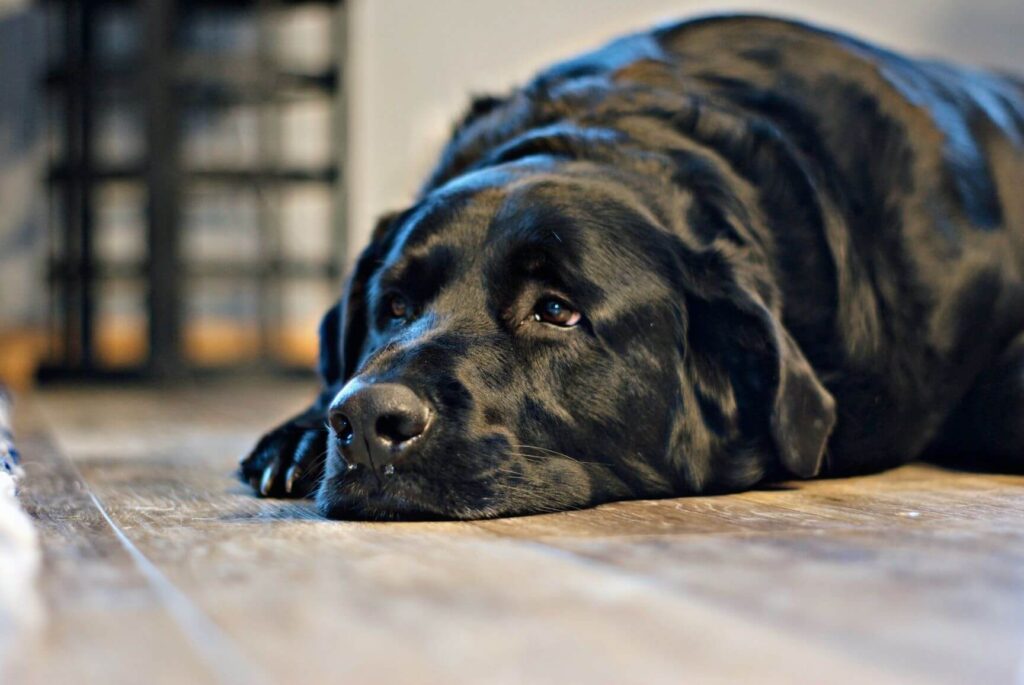
Strategies to Help Manage Labradors Retrievers in Apartments
Despite these challenges of having a Labrador in a smaller living space, you can make it work, and we have some suggestions for things you can do to try to make things easier for you, your dog, and maybe even your neighbors.
Create a Good Routine for Your Lab
The first step is to set your Labrador up on a good schedule and routine for each day.
Have designated outside potty times, walk times, and mealtimes. Try to keep to this routine as much as possible, obviously understanding that some adjustments will happen as a normal part of life.
Labs are very intelligent dogs, and your Labrador should catch on to the routine very quickly, within the first few days of you trying to establish one.
If your Labrador knows what to expect for each part of the day, their energy and enthusiasm will be better and easier for you to manage.
If they know, for example, about what time they usually go for a potty break, have a meal, take a walk, or go in their crate for quiet time, you will find it easier to manage their behavior, even in a small living space.
Locate Outdoor Space/Exercise Options
This is a critical step toward succeeding in apartment living with Labradors.
Take the time to locate appropriate outdoor space for your dog and options for you to exercise them that you can access daily.
Will your Lab require walks daily, possibly multiple times per day, to get their energy out? Most likely this will be something you’ll have to consider doing, especially if you have no yard or a very small one.
Do you have parks or other open spaces that might be an option for your Lab to play? If you have a dog park nearby, this could be a great option for occasional play, or even daily visits if your schedule allows.
Whatever form this takes, whether it’s a routine of walking your dog or playing at the park, you’ll want to locate an adequate space for exercising your Lab and schedule it into the routine you’re creating.
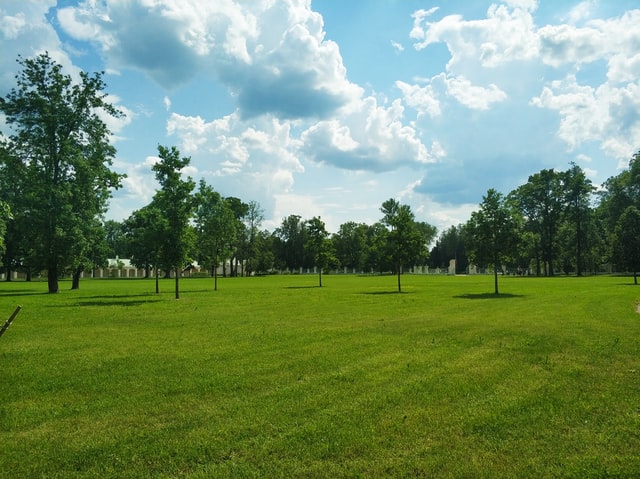
Find Indoor Space Such As Doggie Daycare
Another great option, especially in climates that sometimes have severe weather, is to locate indoor play spaces for your dog, such as doggie daycare.
If you don’t want your Lab around too many other dogs in that type of environment, you could also look for a dog sitter on Rover.com or another similar site where you could find a smaller group for your dog to play with.
You’ll want to have a backup plan for exercising your Lab and getting their energy out, even on rainy days or in severe weather.
You’ll also want to have a place for your Lab to play in the event that your schedule doesn’t allow you to get in as much exercise for your dog on a particular day, such as due to work commitments or travel.
Create Quiet Spaces in Your Apartment for Breaks
At home in your apartment, create a quiet place for your Lab to go that signals to them that it’s “break time” and time to wind down.
If your Lab is crate trained, this is a great place to give them their space and rest, either for nap time or just a timeout after playing and exercising.
It will help for your Lab to have a protected, quiet place to go in the event that you’re dealing with noises from your neighbors or other triggers in your environment that might be aggravating your dog.
Labradors can be excellent watchdogs, and they might feel like they need to be “on-duty” when in apartments or smaller living spaces due to the amount of traffic and noise they could be exposed to.
Giving them a quiet place to go and relax might help eliminate some of the behaviors you might see your dog demonstrating as they react to a noisier environment.

Provide Toys for Mental Stimulation
Another great tip for managing life with Labradors in apartments or smaller spaces is to give your dog toys inside that help mentally tire them out.
You won’t want to likely use a bunch of loud toys that make a ton of noise in an apartment, unless your neighbors don’t mind (or you don’t care about annoying them!).
Some great ideas are Kong toys that you can fill with things like mashed bananas, peanut butter, or treats, and place them in the freezer.
You can also buy “puzzle feeders” for dogs, which you fill with kibble. These feeders require your dog to work harder to get the pieces out, which provides a bit of a challenge, makes your dog take longer to eat, and gets them tired out in the process.
You can find Kong toys and puzzle feeders in your local pet store or on Amazon.
Now that we’ve covered some survival strategies for life in apartments with Labradors, let’s take a look at one special circumstance: hotels and dogs.
Hotels with Labrador Retrievers – How to Survive This Special Experience
There’s a Marriott hotel in the suburbs of Tampa, Florida that we’re fairly sure we’re now banned from. Or really, our Labradors are banned from.
It might have something to do with a certain chocolate Labrador member of our family who went on a “Doggie Adventure” through the Marriott’s main level, lobby, and breakfast area of the hotel without permission back in 2017.
While the hotel was pet-friendly and so kind to our Labradors, sometimes Labs get a little out of control and decide to take off on their own through hotels.
Make sure you’re aware of the Dog Zoomies, which can be triggered without much warning by a cooped-up dog and too much excitement around, especially things such as the compelling smells of the hotel breakfast.
While we managed not to get kicked out for that particular stay, we’re pretty sure we’re now on the hotel’s “banned list” for the future.
Hotels and Labradors can be very tricky.
We cover this topic in much more detail in a separate article about Travel with Labradors, but for now, just remember that the same rules listed above apply to managing your pet in hotels.
Crate space, exercise, and mental stimulation will be your assets here.
Give your Lab plenty of breaks, time outside, exercise, play, dog parks, or doggie daycare, and provide toys inside to keep them mentally occupied.
Make sure your Lab is crate trained before traveling with them to a hotel as having that familiar quiet place to retreat to will help them be more manageable in an unfamiliar hotel space.
Remember, a tired Lab is easier to manage in a smaller space.
And watch out for that free breakfast they sometimes offer in the lobby… if you have a mischievous Labrador like ours!
Summary – Labradors and Apartment Living
Whether it’s just for a short time, or more of a long-term living situation, you can succeed in living in an apartment, condo, or townhome with a large breed dog like Labrador Retrievers.
There’s no doubt that having a Labrador in an apartment or small space is going to be harder, but with a few strategies, you really can make it work!
We hope this guide has helped you consider what challenges you’ll be facing ahead of time, and given you a better understanding of what steps you can take to overcome them.
Are you sharing a smaller living space with a big, energetic dog like a Labrador Retriever? Let us know how you make it work in the comments below!

